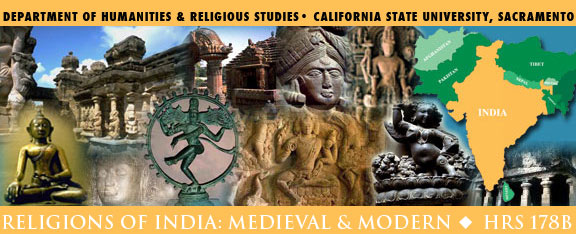 |
|
The terms "observation" and "report" (see below) indicate that everything you do in the journal should be typed and revised to ensure clarity. The word "journal," on the other hand, indicates that the writing done here is more reflective than for a paper proving a particular point; and that you will not be penalized for grammatical errors.
In the observation journal as a whole you will explore connections between your observations among members of a local Buddhist community, recorded as a local worship site, and related details encountered in the assigned readings done throughout the term. The sequence and due dates of these assignments are listed here, with links to the more detailed instructions below and elsewhere.
| Due
Dates |
Assignments
Due |
| February 21 |
turn in name of the site
you plan to visit |
| March 20 | draft of site observation (part 1 of site visit report) |
| March 27 |
|
| May 15 |
follow-up report (2nd visit or interview) |
May 21 |
In order to complete this report, select one "scene" (i.e., a set of related moments, or else two closely-related scenes) from the details you observed and recorded during your site visit. This scene should relate in some way to one or more details in the assigned readings done so far (see # 3 below under "Primary Tasks"). For example, you might chose a moment in a worship ritual you observed that reminds you of a practice your read about; an image you saw at the site that reminds you of a deity or idea described in a reading; or a person you observed or spoke with who reminded you of some person or role mentioned in a reading. [read more...]
Ingredients:**IN CASE OF LOSS, KEEP TWO (2) ELECTRONIC COPIES**
Note also point values, late policy & style/format.
Extra Credit: up to five points of extra credit may be given for any report that reflects thorough reading of one of the optional primary sources listed in the schedule of readings. Make sure to hand-write "PLEASE CONSIDER FOR EXTRA CREDIT" at the top of your paper if you wish you report to be considered.
[TOP]
As a follow-up to your site visit, you should EITHER (A) return to the same site to observe a different event OR (B) conduct an interview with a member of the site's community. Your follow-up report should then both describe the second visit or interview and compare that description to the details of the initial site visit report. If you chose to visit the site again, you should once again select one or two "scenes" to highlight in your report; if you chose the interview, select two or three key moments from the interview, including at least two direct quotations of 2-4 sentences each, that relate to some detail(s) in the assigned readings. [read more...]
**IN CASE OF LOSS, KEEP TWO (2) ELECTRONIC COPIES **
Please review point values, late policy & style/format as needed.
Extra Credit: as with the site report, up to five points of extra credit may be given for any report that reflects thorough reading of one of the optional primary sources listed in the schedule of readings. Again, make sure to hand-write "PLEASE CONSIDER FOR EXTRA CREDIT" at the top of your paper if you wish you report to be considered.
[TOP]
Like the Mini-Midterms, the take-home Final Exam asks to you relate key terms to one another and to provide citations from the readings to show that you understand those terms. In this case, however, you will select five terms yourself and relate them your own observations made during the site visit(s) and/or interview; the excerpts you use to illustrate the terms will be drawn from those observations rather than from assigned primary sources for the course.
Instructions:
Choose the five terms or names assigned for RPTs #1-4 that most clearly relate to the observations presented in your site visit and follow-up reports. (CAUTION: do not use terms assigned for the trial RPT given at the very beginning of the term, as these are too general to provide the specificity needed for a focused analysis.)
Then complete the "Final Exam" form available for download (PDF/MS Word), which asks you to relate the five terms to one another, and to the rituals &/or customs you observed during site visit(s) and/or heard about during your interview; and then to relate each term to the observations detailed in your two reports.
Other Requirements:
**IN CASE OF LOSS, KEEP TWO (2) ELECTRONIC COPIES **
Extra Credit: as with
the site report, up to five points of extra credit may be given for any
report that reflects thorough reading of one of the optional primary
sources listed in the schedule of readings. Again, make sure to
hand-write "PLEASE CONSIDER FOR EXTRA CREDIT" at the top of your
paper if you wish you report to be considered.
RELIGIONS OF INDIA: MEDIEVAL & MODERN--> HOME